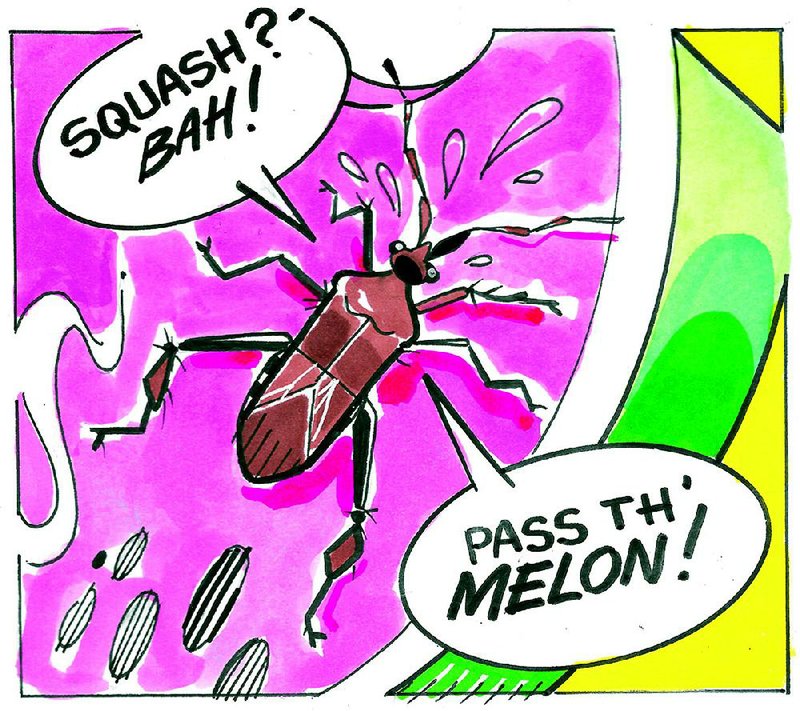Q I seem to get squash bugs every year on my squash and zucchini plants. Is there anything I can put on the plants to prevent this? I usually reach for Sevin Dust when I see the first one, but it doesn't really kill them and to be honest, I'm not thrilled about using this poison on edibles; however, if I don't use something I won't have any plants.
A Squash bugs multiply quickly and are difficult to kill the older they get. Early detection is important. Watch for their eggs, which they lay in clusters on the leaves. Rub the eggs off so they don't hatch. If you see signs of the bugs, put out traps. A simple trap involves setting out rinds of melons overnight. They gather on the rinds, and you can get out early and throw them away.
Q I am emailing for a friend who planted a few crape myrtles last summer in southern Arkansas. They did experience some growth after planting. Now this summer the trees and limbs are dead, but the roots appear to be alive. Do you recommend pruning them back or any solution for them?
A It depends on what the person wants. By now, if the roots are alive, you should be seeing suckers emerging from the soil line. They can choose one to three of the sprouts, prune everything else out and regrow the plants from the sprouts. If they want a more established tree faster, they might consider buying a new tree. Do they have any idea why the trees died? Did they water when it was dry? Could something have been sprayed on them? Knowing the answer to that could make a difference in what decision is made.
Q I live in the southeastern part of the state. When is the best time to prune my impatiens, and how?
A Impatiens are annual flowers that do well in the shade. Some of the new Sunpatiens varieties also do well in the sun. Annuals are normally not pruned unless the plants get long and leggy and you want them to bush out. Prune when that happens, not before. Otherwise, keep them well watered and fertilize them lightly every two to three weeks during the growing season.
Q Any idea why my big leaf hydrangeas are wilting during the heat of the day?
A Big leaf hydrangeas (Hydrangea macrophylla) wilt for several reasons. One is lack of water -- they are not drought tolerant plants. Secondly, big leaf hydrangeas will wilt in the heat if they get any direct afternoon sun. They do better with morning sun and afternoon shade, or dappled sunlight. With afternoon sun they wilt, and with no sun, they won't set flowers. And the last reason for wilting is that it is too dang hot! I think we would all agree that temperatures in the upper 90s with heat indexes in the 100s is too hot for late May, and the hydrangeas agree. They aren't the only plants that wilt when temperatures are near 100 degrees.
Q I remember reading your article about plants that will make a good screening hedge row, but did not keep the information. I need to plant about a 12-foot hedge row that does not need to be really tall. I would like something that grows rapidly but won't need much maintenance when mature. I live in Hot Springs Village. The area is pretty much a shady area with some lightly filtered sun. I assume that will affect what I plant.
A I assume you want an evergreen. Wax myrtles are a good choice for shady areas but they are not a formal plant at maturity, since they have a more open, floppy appearance. Illicium (Florida anise) is another evergreen with blooms in the shade that would do well. Hollies and boxwood both grow well in sun or shade, and there are variable heights of both.
Janet B. Carson is a horticulture specialist for the University of Arkansas Cooperative Extension Service. Write to her at 2301 S. University Ave., Little Rock, Ark. 72204 or email her at
jcarson@arkansasonline.com
HomeStyle on 06/09/2018
